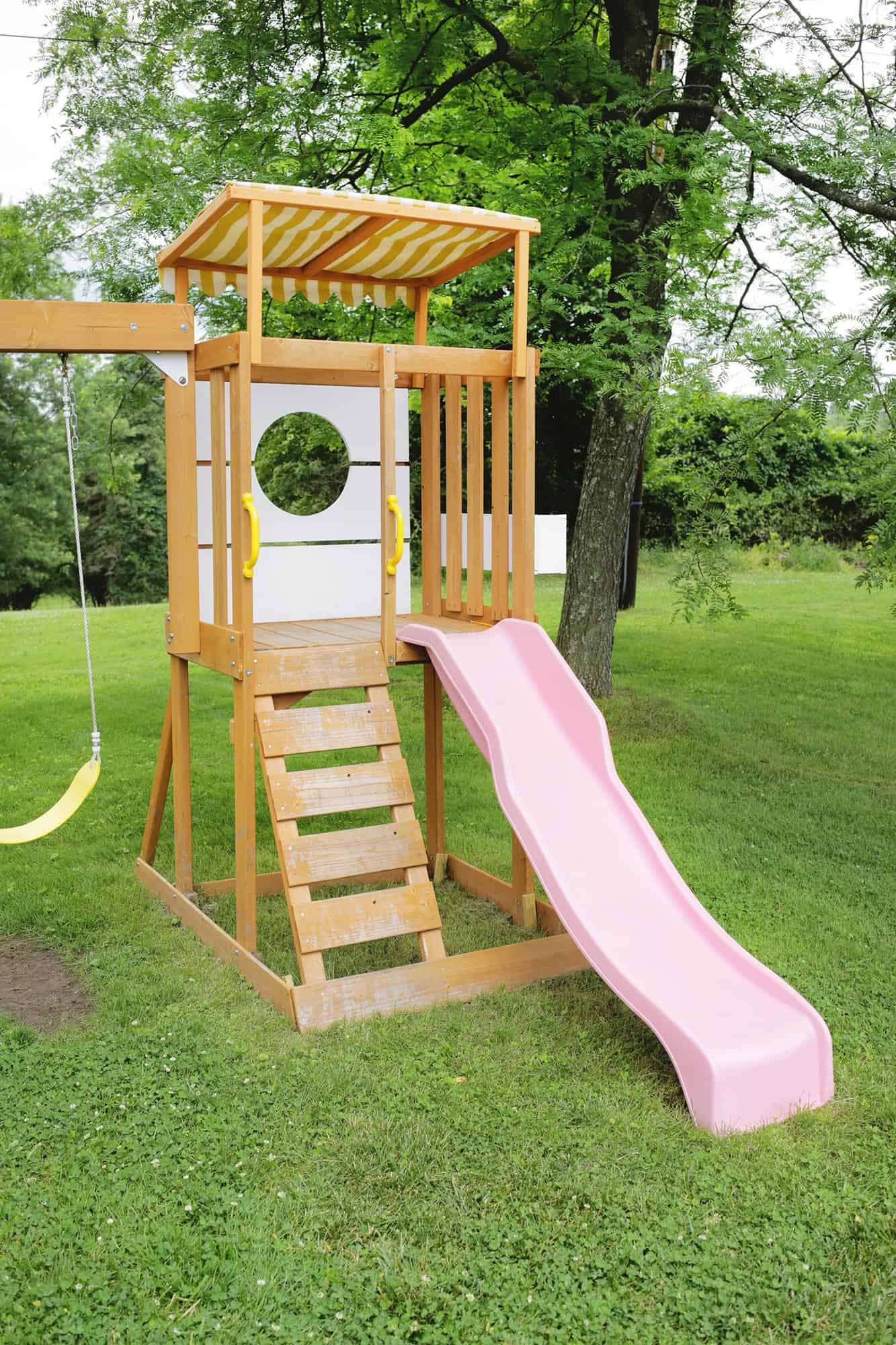
Whether you have some lawn furniture that’s seen better days or a kid’s toy that has been worn down with use, knowing how to paint plastic means that you can give fresh life to a piece (rather than having to say goodbye too soon).
Plastic is one of the more difficult surfaces to paint because of its smooth surface, and plastic responds to temperature more easily by expanding and contracting, so it’s more prone to cracking or flaking over time.
By taking a little extra care, you can get a new paint job that looks great (and will last longer) than if you rush through the process and skip right to the painting.
Check out our other helpful tip posts with …

I painted my daughter’s plastic slide on the DIY Mid-Century Play Set Makeover I did for her, and this plastic gets the most beating of any possible item. It sits directly in the sun, so there’s a lot of swelling and shrinking with the weather.
Plus, it’s outside in the winter and all the other elements, and has kids literally sliding down and climbing up it almost every day. It takes a beating, but it’s easy to refresh the paint as needed.
And when you paint a plastic object that’s indoors or used more gently in a covered space, well, you can imagine how much longer the paint job stays pristine.
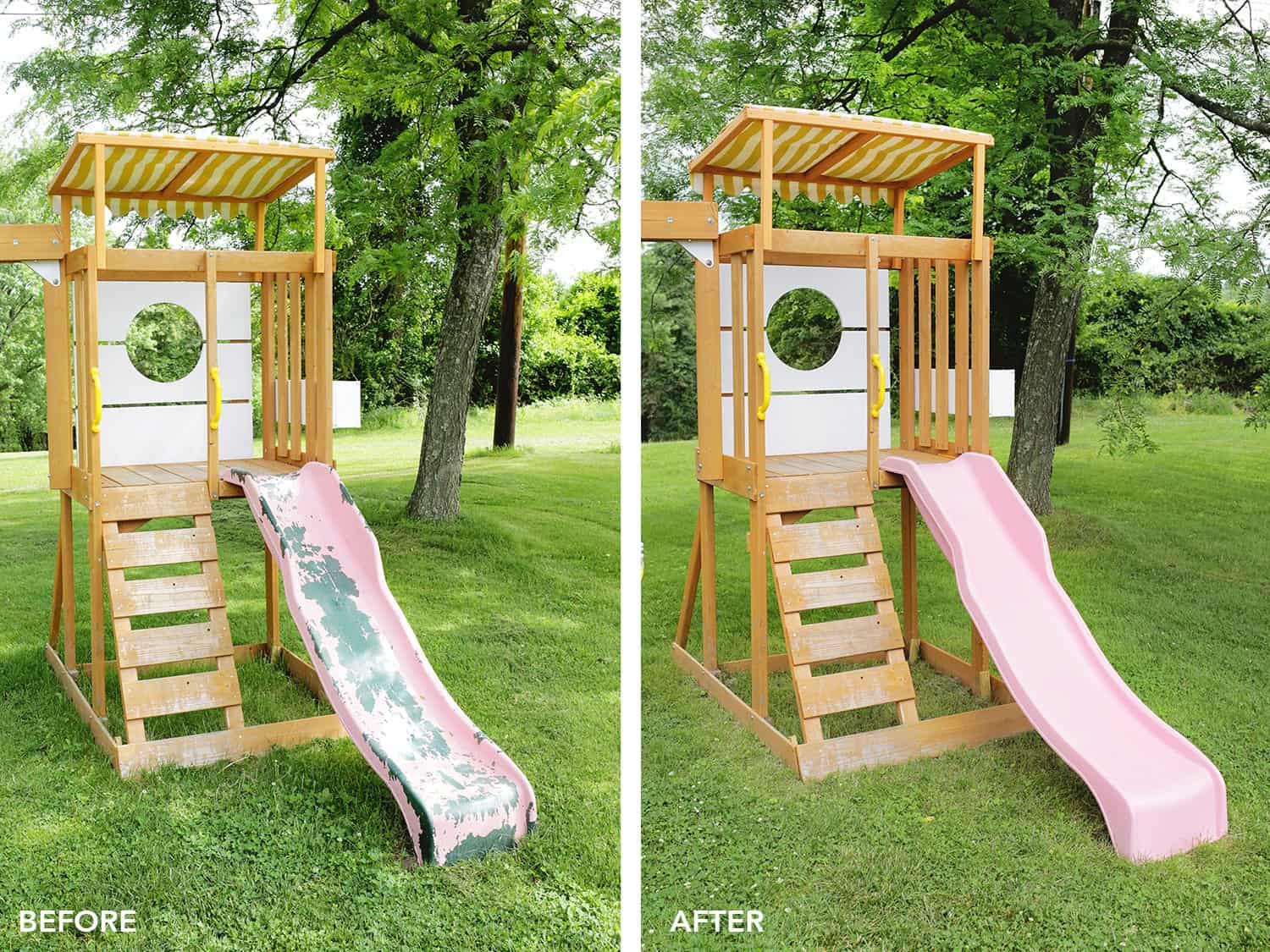
Prepping your area before painting: Spray painting is always best done outside whenever possible because of fumes and overspray. Check the paint can for the temperature requirements so that it’s not too cold for the paint to set properly.
Put down a tarp, plastic sheet, or a large piece of cardboard so your lawn/patio will be protected—paint soaks into cardboard easily, so that’s what I usually use.
Paint Tip! If there are areas you don’t want to paint (or want to paint a different color), tape off those areas with painter’s tape or wrap plastic around those spots and use painter’s tape to keep the plastic in place.
Even though there are paints out there with a primer already included, when painting plastic it’s a good idea to use a plastic-specific primer first for best adhesion. Do it after the surface is roughed up a bit with sandpaper and cleaned, and apply it in even light coats.
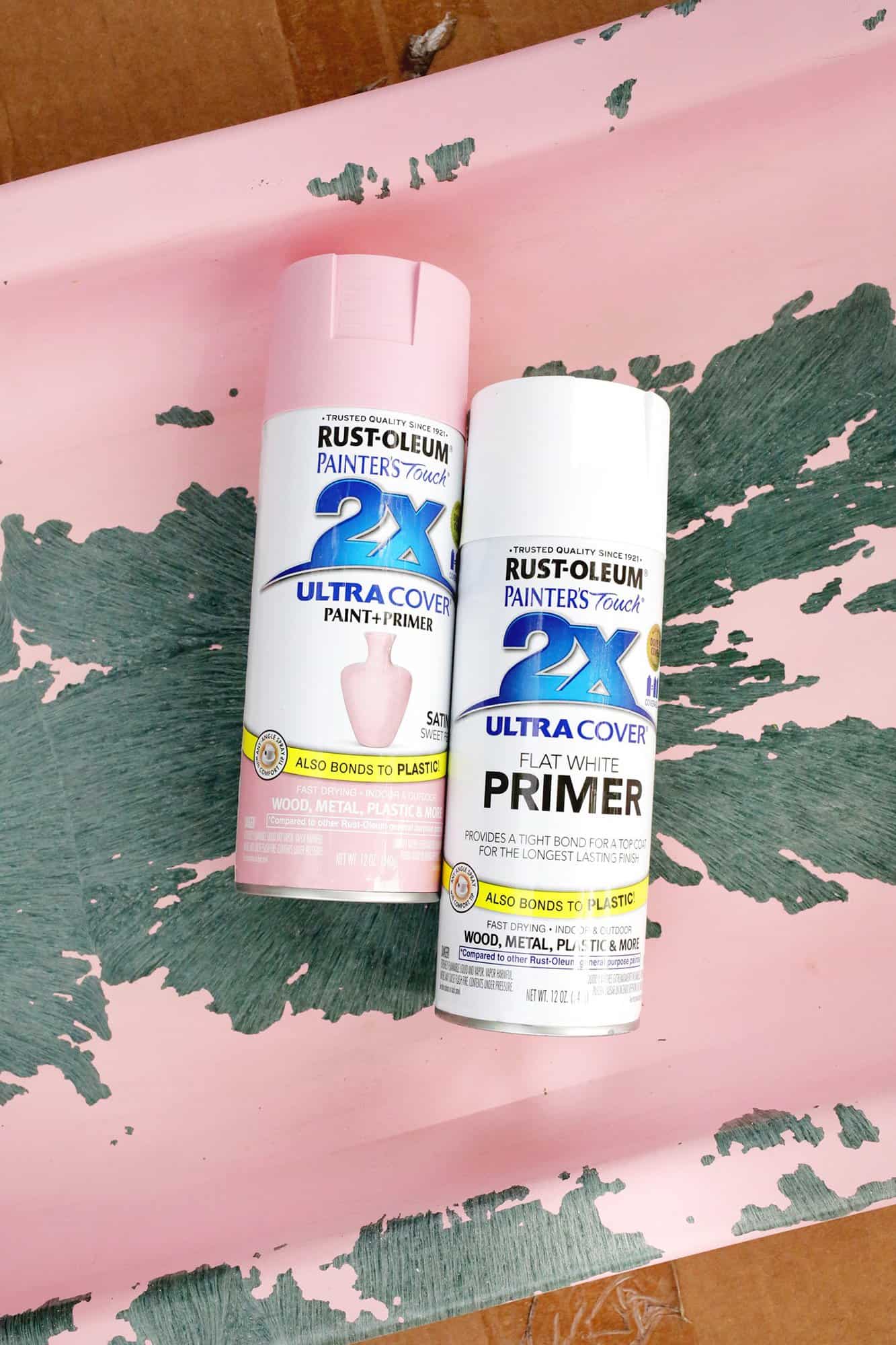
Supplies:
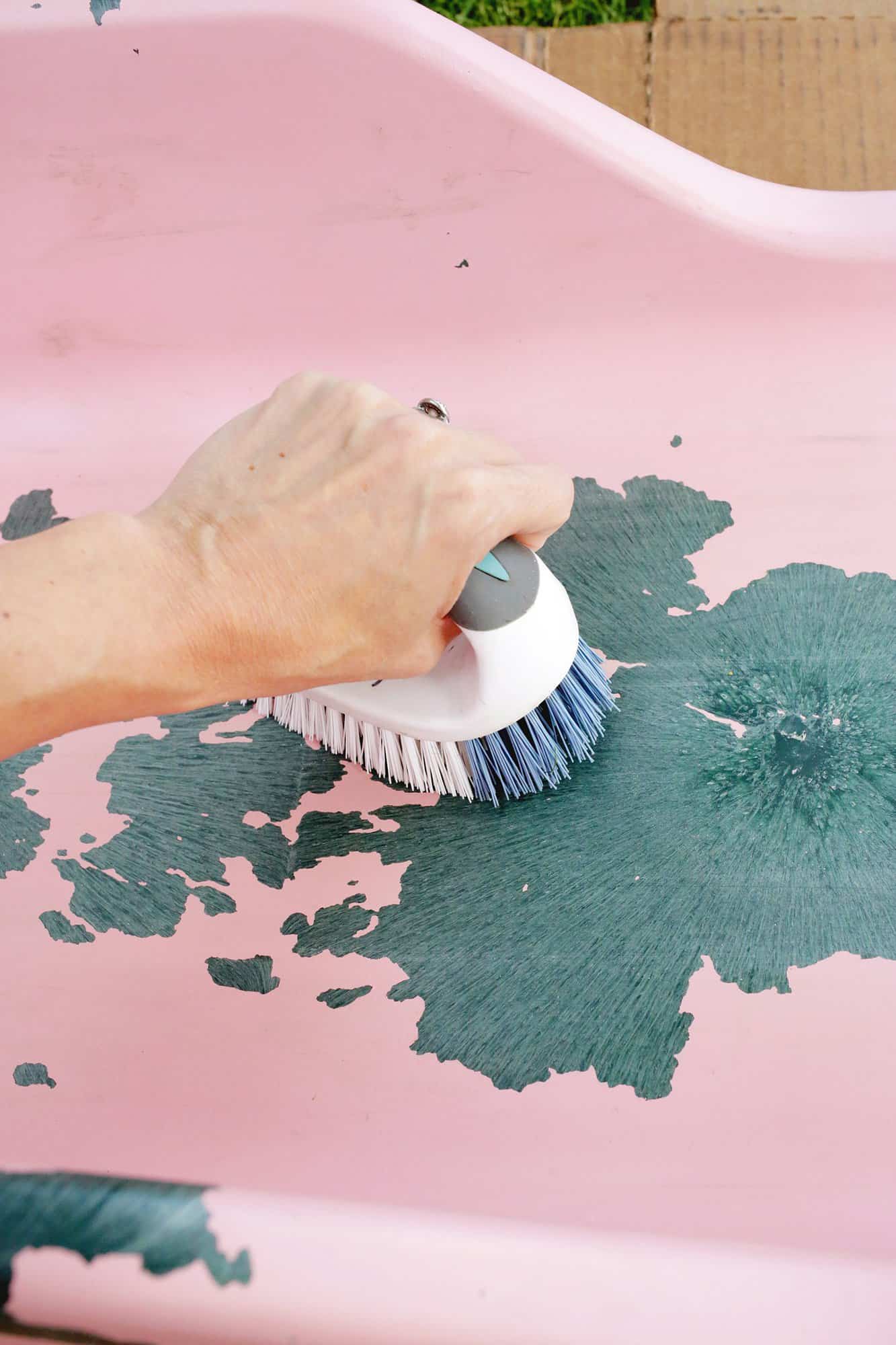
Step one: Clean off the surface with a scrub brush. Using it dry first will remove any loose or flaking paint if the item has been painted before, and going over it again with some soapy water will remove dirt on the surface as well.
If the item is outdoor furniture, you may need a little elbow grease to get off areas that have mildew or algae growing.
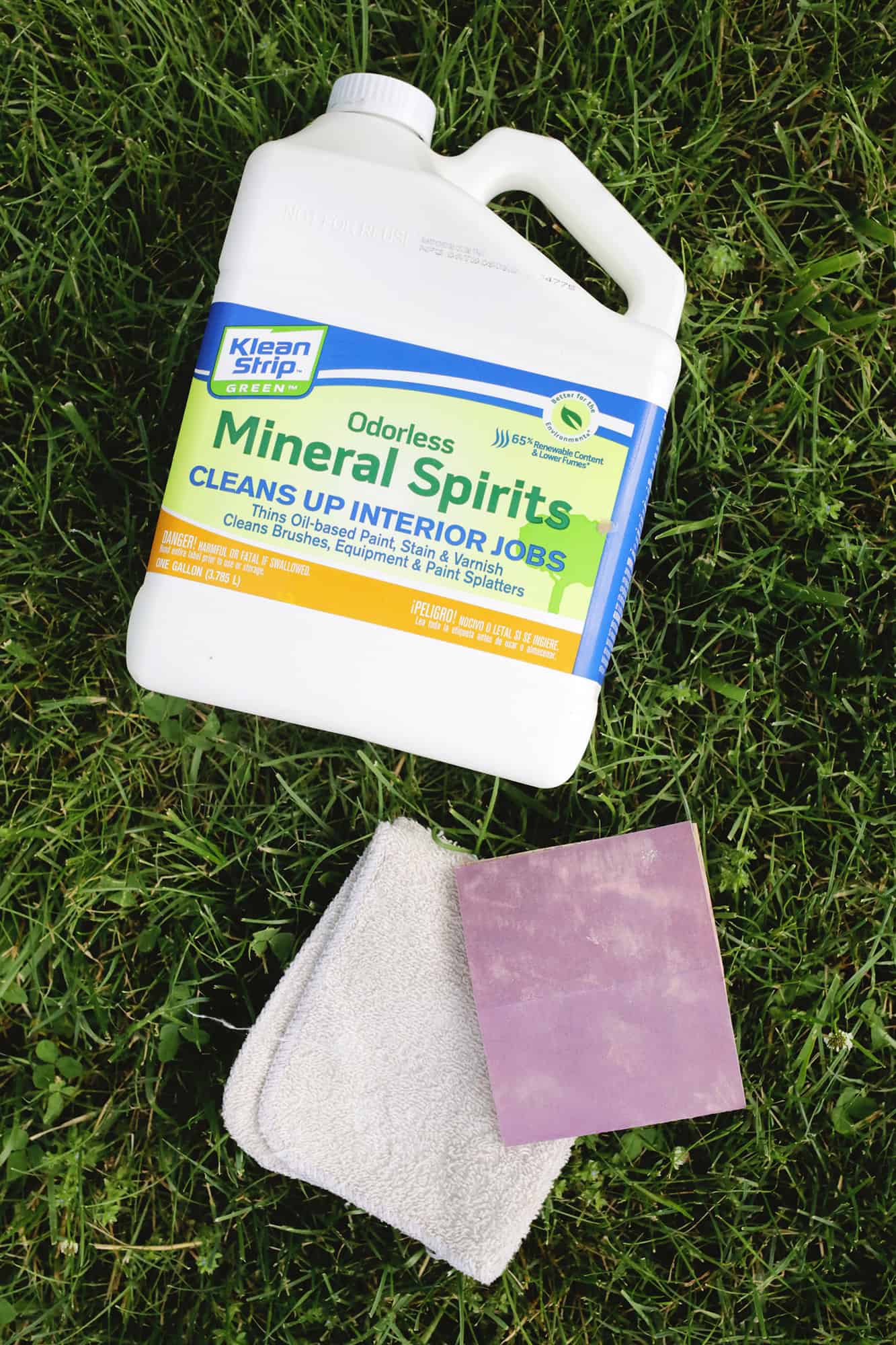
Step two: Sand your item with fine grit sandpaper. Since most plastic is smooth, you want to rough up the surface a bit to give the paint something to stick to.
Fine sandpaper will rough up the smooth surface without leaving visible sanding marks, so make sure to keep it to a fine grit.
Step three: Remove sanding dust. Now that your item has a rougher surface, make sure to clean off all the sanding dust so that there’s no barrier between the paint and the item so they can properly adhere.
Use a dry cloth first to get the bulk of the dust and then use a wet rag with mineral spirits or isopropyl alcohol to trap the final particles.
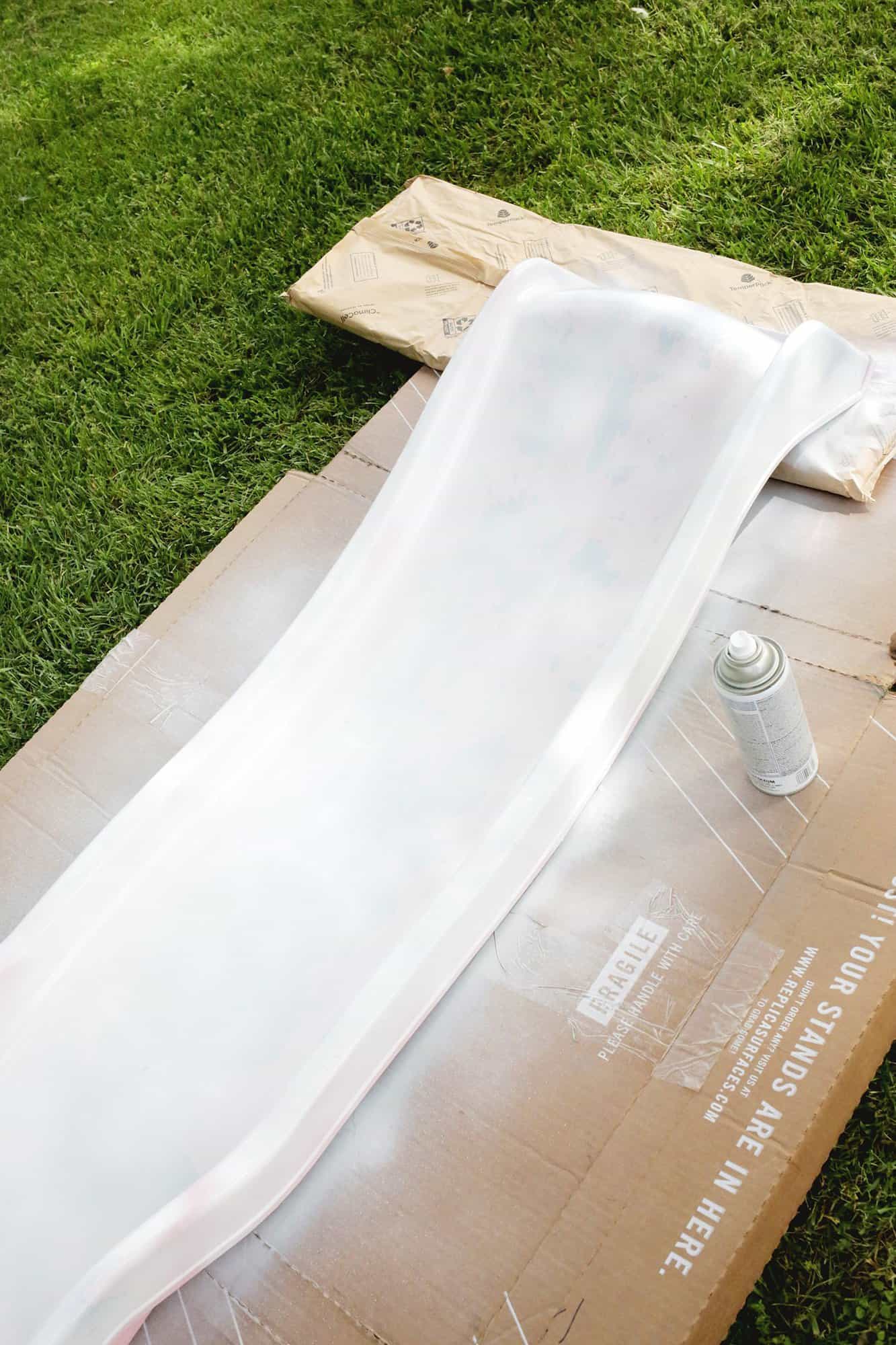
Step four: Paint with primer. Lay your item flat onto your cardboard or tarp and spray it with thin even coats of primer.
Keep going in one direction in a close zig-zag pattern (don’t go backwards where you already sprayed). Allow it to fully dry according to the can directions before proceeding.
Paint Tip! Spray a test item first to make sure paint is mixed well enough or isn’t past it’s shelf life if it’s one you’ve had for a bit. Sometimes the nozzles on spray cans can get clogged, which you can usually fix by taking off the nozzle and soaking in mineral spirits or paint thinner for a few hours before putting it back on.
If you just start spraying your item right away, you may get a chunky thick spray that you can’t really fix once it’s on, so it’s better to test it first to make sure it’s spraying smoothly and evenly.
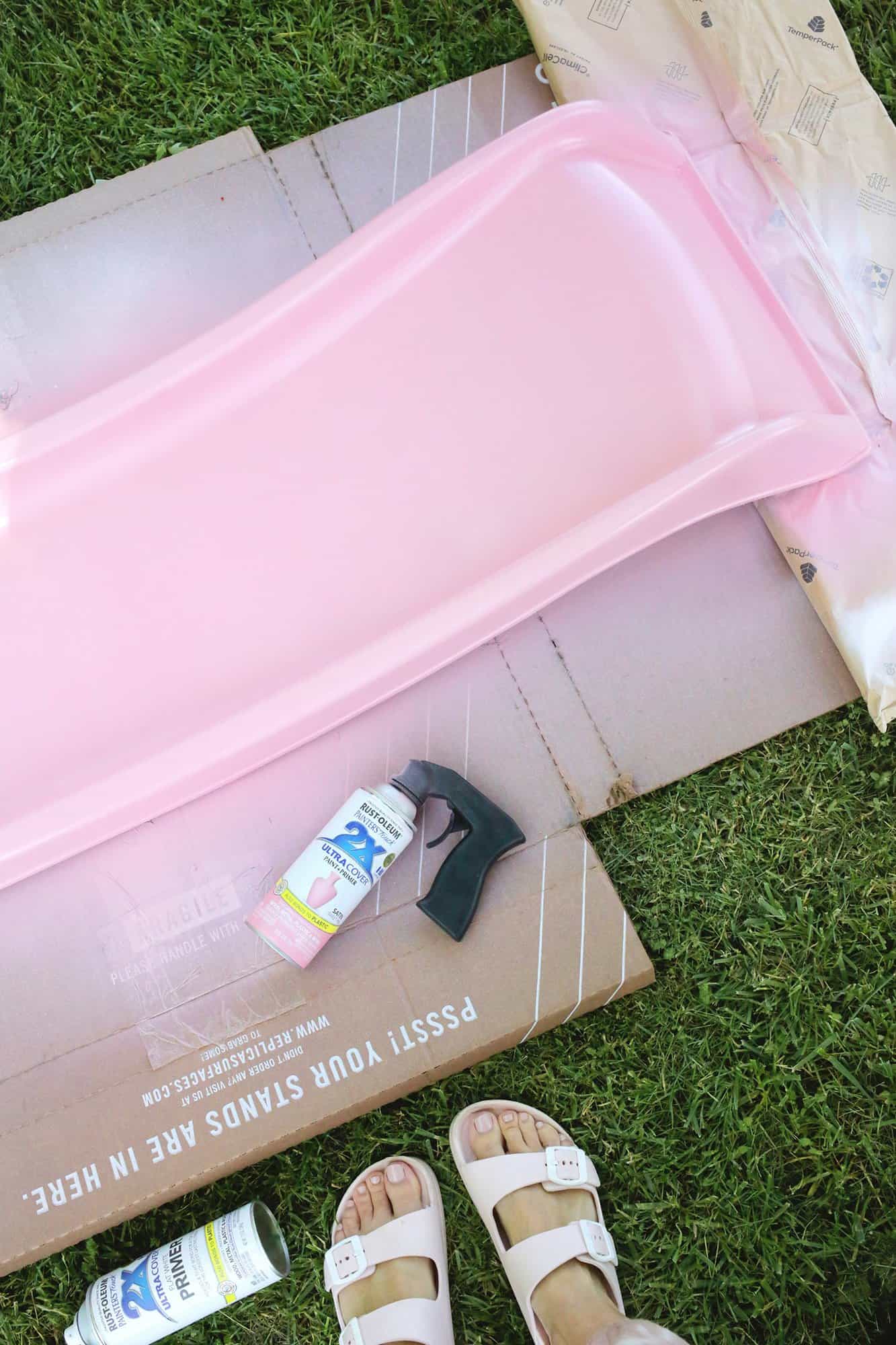
Step five: Spray paint with your final color. Plastic isn’t absorbent, and it doesn’t soak up paint like most materials, so you really have to do more coats of light coverage to avoid drips.
Have patience and do one light coat at a time, waiting the proper dry time between coats according to the paint directions, until your whole item is covered evenly.
Paint Tip! Make sure not to spray too closely! Hold the can 8-12″ away from the item and tilt down at a 45° angle to spray light coats.

How to Paint Plastic Painting Tips:
- If the item is something that is handled or sat on, wait several days to let it totally cure before using.
- If you feel like there’s a slight roughness to the paint in spots, you can use an extra fine sandpaper to gently smooth out those spots in a light circular motion when the paint is 100% dry. Then, wipe the paint dust away with a dry and then a wet cloth (just wet with water).
- Make sure to shake the paint can every so often to keep it mixed evenly.
- Once you are down to the end of the can, don’t use the very last of the paint. It tends to come out chunky near the end, so just leave the last bit in the can.
There you have it! Now you can be your own plastic painting expert and refresh the plastic items in your home to give them a whole new life. xo. Laura
How to Paint Plastic
how to paint (or re-paint) a plastic item properly
- fine sandpaper
- scrub brush
- mineral spirits or isopropyl alcohol
- rags
- plastic-specific primer
- plastic-specific spray paint
-
Step one: Clean off the surface with a scrub brush. Using it dry first will remove any loose or flaking paint if the item has been painted before, and going over it again with some soapy water will remove dirt on the surface as well. If the item is outdoor furniture, you may need a little elbow grease to get off areas that have mildew or algae growing.
-
Step two: Sand your item with fine grit sandpaper. Since most plastic is smooth, you want to rough up the surface a bit to give the paint something to stick to. Fine sandpaper will rough up the smooth surface without leaving visible sanding marks, so make sure to keep it to a fine grit.
-
Step three: Remove sanding dust. Now that your item has a rougher surface, make sure to clean off all the sanding dust so that there’s no barrier between the paint and the item so they can properly adhere. Use a dry cloth first to get the bulk of the dust and then use a wet rag with mineral spirits or isopropyl alcohol to trap the final particles.
-
Step four: Paint with primer. Lay your item flat onto your cardboard or tarp and spray it with thin even coats of primer. Keep going in one direction in a close zig-zag pattern (don’t go backwards where you already sprayed). Allow it to fully dry according to the can directions before proceeding.
-
Step five: Spray paint with your final color. Plastic isn’t absorbent so it doesn’t soak up paint like most materials, so you really have to do more coats of light coverage to avoid drips. Have patience and do one light coat at a time, waiting the proper dry time between coats according to the paint directions, until your whole item is covered evenly.
How to Paint Plastic Painting Tips:
- If the item is something that is handled or sat on, wait several days to let it totally cure before using.
- If you feel like there’s a slight roughness to the paint in spots, you can use an extra fine sandpaper to gently smooth out those spots in a light circular motion when the paint is 100% dry and then wipe the paint dust away with a dry and then a wet cloth (just wet with water).
- Make sure to shake the paint can every so often to keep it mixed evenly.
- Once you are down to the end of the can, don’t use the very last of the paint. It tends to come out chunky near the end, so just leave the last bit in the can.
